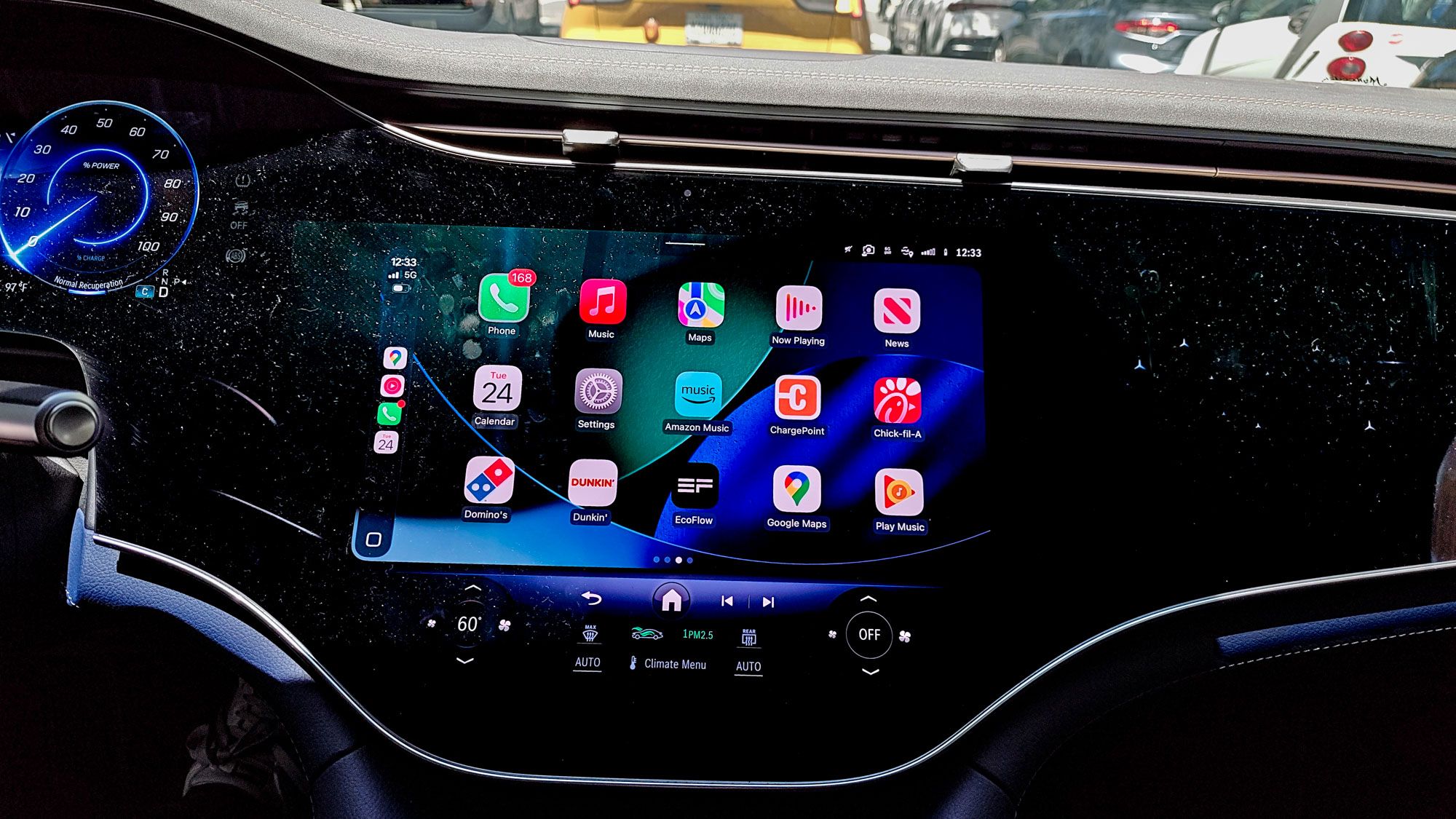Early on when I first started testing EVs, I got spoiled by how I could access Android Auto and CarPlay wirelessly in them. The fact that I could start my car and have my phone’s functionality seamlessly at my disposal through the main dashboard display was game changing.
That’s been my method over the past year testing out the best electric cars. Whenever I came across a new vehicle I was testing that offered wired connectivity as opposed to wireless, like the Hyundai ioniq 6, I would ding it for that because I craved the convenience of not having to deal with a wire. But I’ve had a change of heart recently, as I’ve experienced more inconveniences lately with wireless Android Auto and CarPlay. Here’s why I think going wired is the better option for phone connectivity in your car.
Not as much battery drain
Since wireless Android Auto and CarPlay connectivity uses your phone’s Wi-Fi to directly communicate to it, this ends up becoming a big drain to your battery. My daily commute whenever I drive is about an hour and 15 minutes long depending on traffic, but I’ve seen countless times when I arrived home with my phone begging me to activate its low power mode.
By choosing to go with a wired connection, this method obviously charges your phone so that it remains at a decent level by the time you arrive at your destination. You might argue that I could counteract the battery drain by putting my phone on a wireless charger, but that brings up my next point.
Your phone will run cooler
Another unintended result from using wireless CarPlay or Android Auto is that the constant transfer of data causes my phone to work hard, and as a result, becomes frequently hot to the touch. This usually gets annoying 15 minutes into my driving because of the warm feel I get in my pocket.
I know very well how heat buildup can be a slow killer to any device, including any of the best phones out there because it does long term damage. Going with a wired connection makes your phone work less, which in return keeps it a more moderate temperature. If I could use one of the infrared cameras I test out every now and then, I wouldn’t be shocked by the results.
Your best bet is to place your phone in the center console area, but even then I’ve noticed my phone being quite warm when I exit the vehicle.
Practically no latency issue
The last point I want to make about why wired Android Auto and CarPlay is better than wireless actually came to me only in the last month. For some reason while I was testing out the Lexus UX 300h, I began to notice a delay in some typical media controls whenever I streamed songs from YouTube Music.
At first I didn’t think much of it, but then it started to get worse with a delay of about a couple of seconds trying to fast-forward a track. That might not sound like a lot of time, but trust me it is when you’re shuffling a playlist in the hope of getting the right song.
Not surprisingly, the media controls were much more instant when I switched back to a wired connection — which leads me to believe that wireless connectivity impacts latency. Plus, it doesn’t help when you’re in gridlock traffic with other people around who are probably using Wi-Fi to an extent.
Bottom Line
More vehicles now than ever offer support for wireless CarPlay and Android Auto, but you should still consider going with a wired connection. I’ve explained my experience of using it, which I think has more practical benefits in the long run. From keeping your phone from having to overwork itself, to the near instantaneous communication between your phone and those services, I no longer consider wired connectivity as a bad thing.
Follow Digitpatrox on Google News and add us as a preferred source to get our up-to-date news, analysis, and reviews in your feeds. Make sure to click the Follow button!
More from Digitpatrox
Source link
